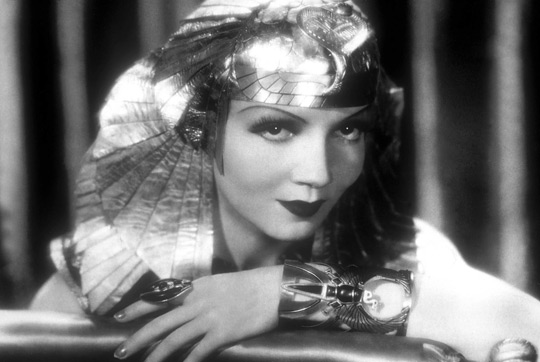Cleopatra may not be the only ancient Egyptian king of the Ptolemy dynasty - Queen Arsinoe II, the woman who competed and won at the Olympic events was the first female king, once ruled the country about 200 years earlier, according to a new study of the unique crown of Egypt.

After analyzing the details and symbols of the Arsinoe- worn crown and and re-interpreting Egyptian reliefs, Swedish researchers are questioning the traditional male-dominated royal line. of Egypt. They claim that Queen Arsinoe II (316-270 BC) was the first female king to belong to the Ptolemy family - the reign ruled Egypt for about 300 years until conquered by the Romans in 30 B.C.
While researchers mostly agree on the prominence of Arsinoe - she has been deified during her life and honored for 200 years after her death - new studies show, in fact She was an Egyptian king in the same role as Hatshepsut and Cleopatra VII .
As one of the great women of the ancient world, Arsinoe was the daughter of Ptolemy I (366-283 BC), a Macedonian general who followed Alexander the Great, who later became Ai ruler Founding and founding of Ptolemy dynasty, Cleopatra was included .
With a life marked by murders, intrigue, sex and greed of the dynasty, Arsinoe may be the best female character of Cleopatra's predecessors.
"She is not an ordinary woman. She fought and even participated in Olympic events and won three victories on horse harnesses, " said Maria Nilsson of the University of Gothenburg.
Married at age 16 with Thrace 's Lysimachos , a 60-year-old general of Ptolemy I, Arsinoe won a lot of wealth and honor during her time in Greece.
18 years later, when Lysimachos died, she married her half-brother, Ptolemy Keraunus. The marriage then ended abruptly after Keraunus killed two of Arsinoe's three sons.
Arsinoe then returned to Egypt and married his brother, King Ptolemy II, who was 8 years younger than her.

A crown never found, but depicted on stone carvings and reliefs, created specifically for Arsinoe.
Nilsson analyzed 158 Egyptian relief scenes dating from the life of Arsinoe to the Emperor Trajan, spanning about 400 years, studying every detail of the crown, including hieroglyphic headlines and rescue scenes. support
She found that the crown was different from the usual Egyptian royal hats such as khepresh (or blue crown), white crown, red crown, double crown, crown of two horn-shaped venom feathers ( or ostrich feathers).
Instead, the crown is made up of four main parts: the red crown, symbolizing the rule of Lower Egypt, the horn of the male sheep, connected primarily to Egyptian sheep gods, Amon, ox horn and the sun disk, symbolizing Hathor goddess and the harmony between men and women, and double-haired fur, an important symbol of Amon.
According to Nilsson , the symbols above show that Arsinoe's crown was created for a living queen, who is said to be a noble nun, goddess and ruler of Lower Egypt at the same time.
" It means she was a king throughout her life. She co-ruled Egypt as king of Lower Egypt, along with her husband Ptolemy II, king of Upper Egypt, " Nilsson said.
Set on a level with the ancient goddess Isis and Hathor, Arsinoe is considered a god throughout his life and was honored 200 years after her death at the age of 45. A special temple, the temple Arsinoëion, was built to honor her at Alexandria, and a festival named Arsinoëia was founded for her.
Found in at least 27 variants, Arsinoe's symbolic crown was later brought by the Queen Cleopatra III and Cleopatra VII of the Ptolemy dynasty and was also used as a prototype of some Ptolemy descendants.
" This study opens up a new field of research and shows that other Ptolemaic queens, especially Cleopatras, tend to imitate Arsinoe II in the elements that describe their image, " Mona Haggag, teacher archaeological archaeologist at Alexandria University, Egypt.
According to Carole Gillis , associate professor at the archaeological and ancient history department at Lund University in Sweden, this study is important because it shows the Queen wearing a crown throughout her life, in the eyes public, with clear and understandable symbols for everyone.
" This queen was really a living king ," Gillis said.
 'Fine laughs' - Scary and painful torture in ancient times
'Fine laughs' - Scary and painful torture in ancient times The sequence of numbers 142857 of the Egyptian pyramids is known as the strangest number in the world - Why?
The sequence of numbers 142857 of the Egyptian pyramids is known as the strangest number in the world - Why? History of the iron
History of the iron What is alum?
What is alum?